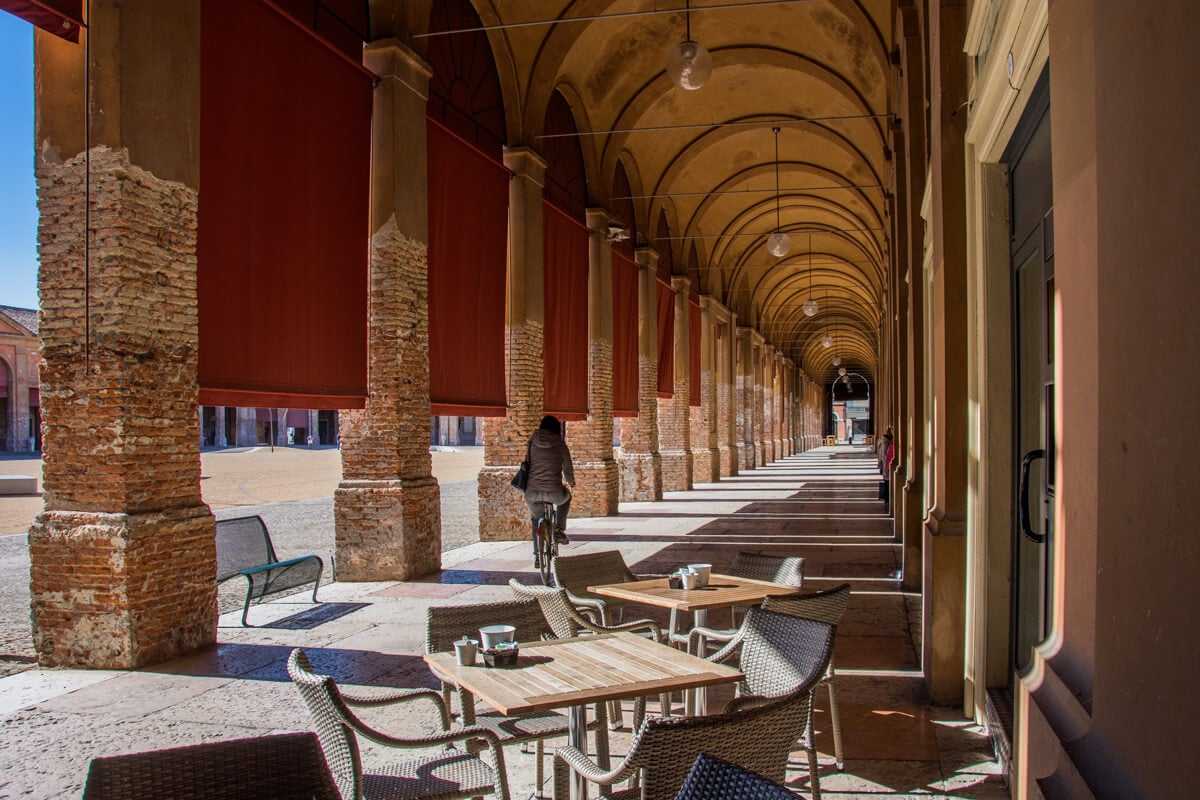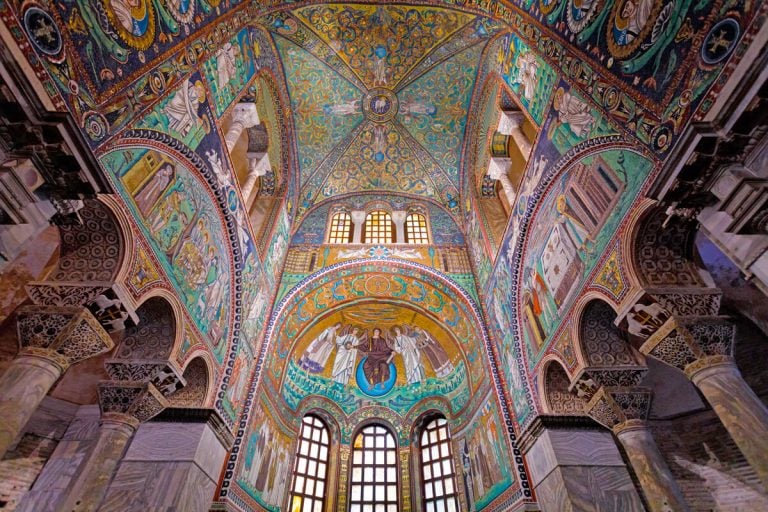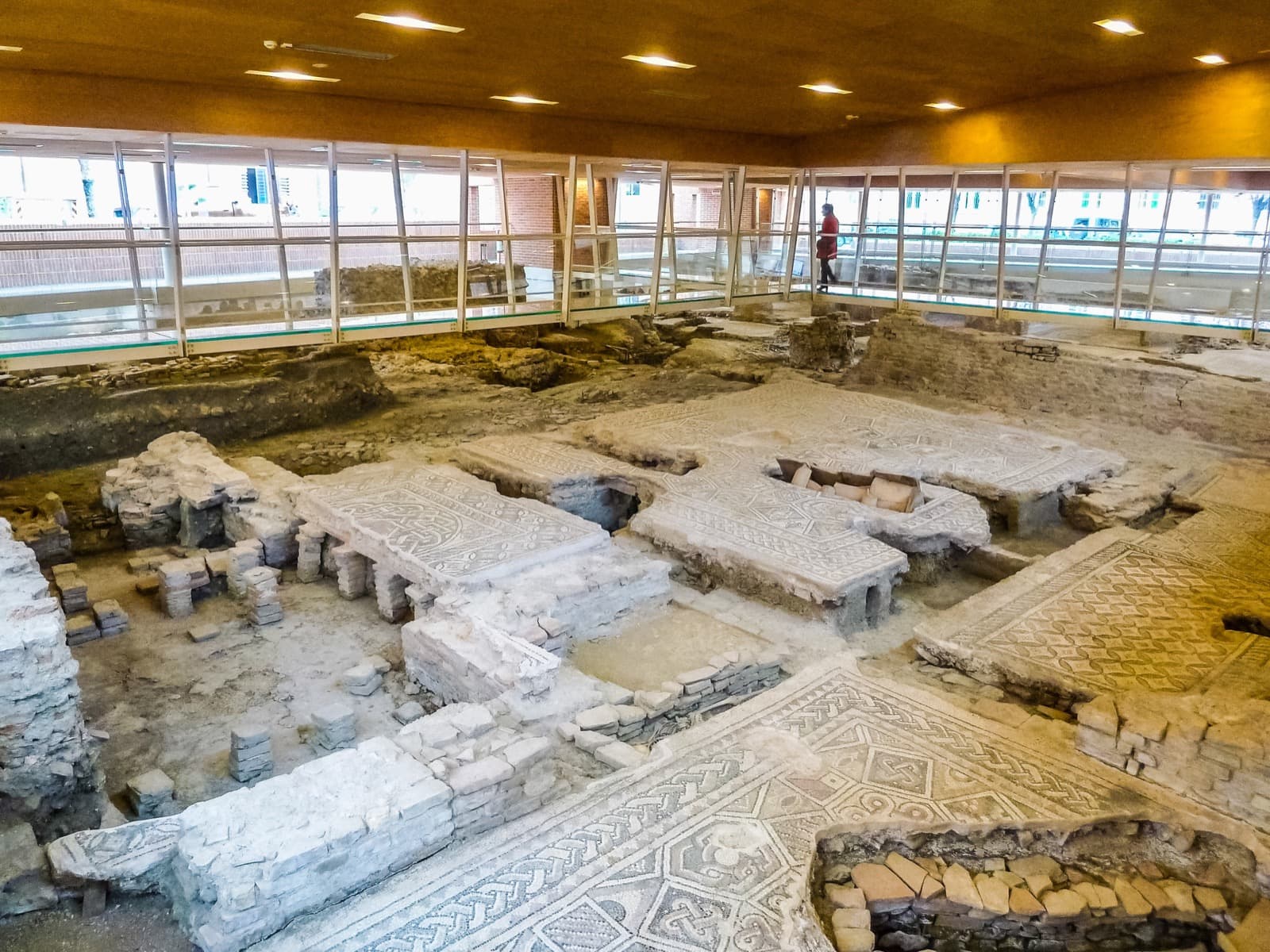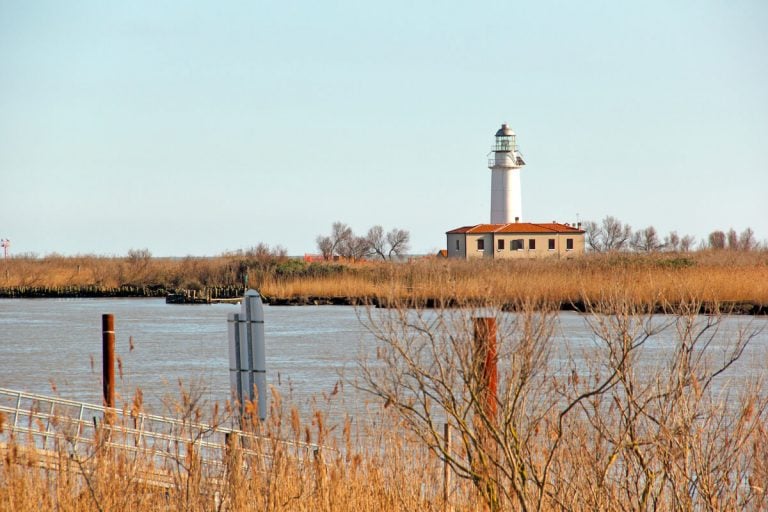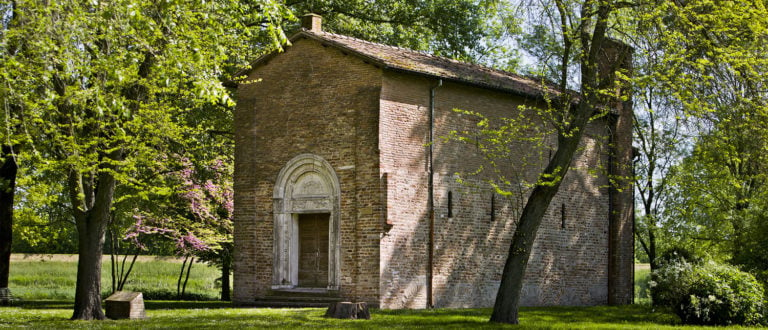Once upon a time, a river in Romagna…
Our fairy tale starts here today. Along a 35 km. long story, as it is the distance which divides — and at the same time connects— all of the historical and cultural beauties of Russi and Bagnacavallo, the landscapes of Ravenna and of the Adriatic sea.
It is a shared-use path both pedestrian and cyclists along Lamone River can enjoy slowly, surrounded by a land of history, culture, and nature. Our guide: the landscape, a unique spectacle. There is WATER — the sweet water of the river that makes the soil so fertile, and the salty water of the calm Adriatic sea, which has been a source of wealth for the fishers of this side of the Riviera. And then, there is the EARTH, with its luxuriant flatland, the farmed fields, the reclaimed valleys, the brackish lagoons, the country buildings, the pine forests, and the fishing huts.
Above us, this extraordinary flock of migratory birds coming from the Po Delta Valley flies, running every year in the skies of the entire Earth, from South to North. The final touch of this suggestive picture are all the cultural, artistic, and especially landscape marvels you encounter along the path, which make it an open air museum, including the local excellences such as Palazzo San Giacomo and the Roman villa in Russi.
So, get ready and climb on your saddle, we are about to discover the trail of the Lamone river!
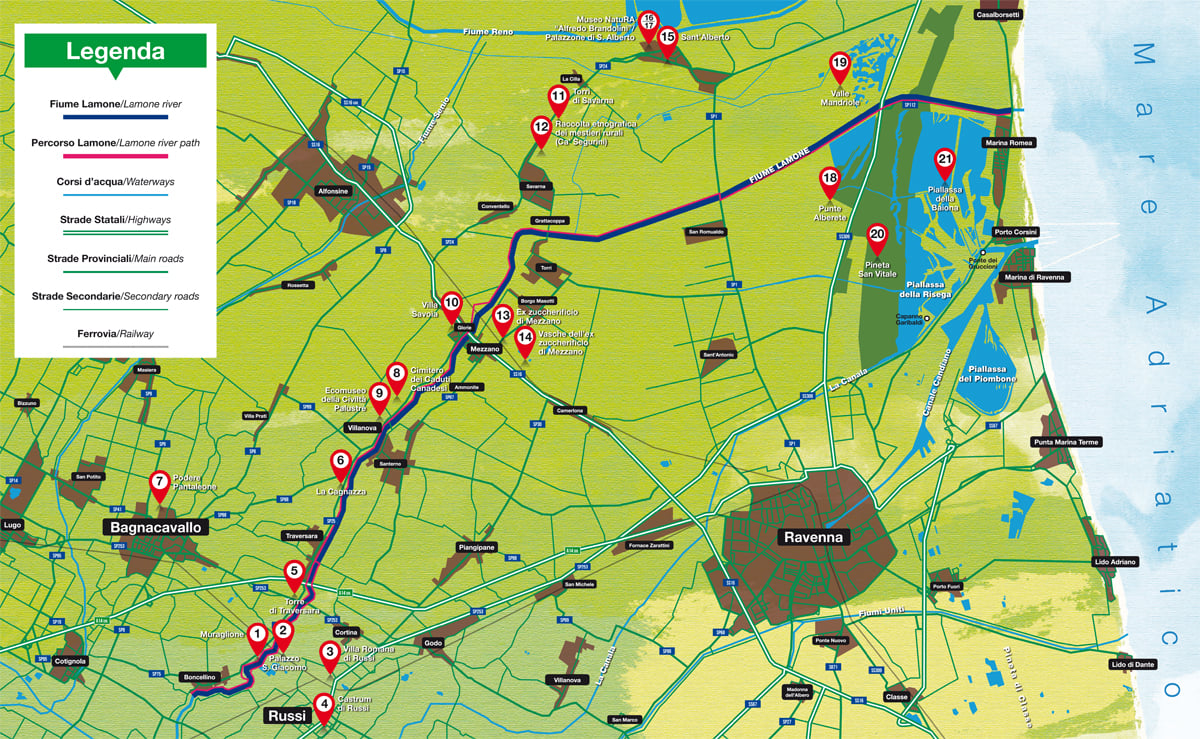
Along the Lamone river | Points of interest
1. Muraglione waterfalls
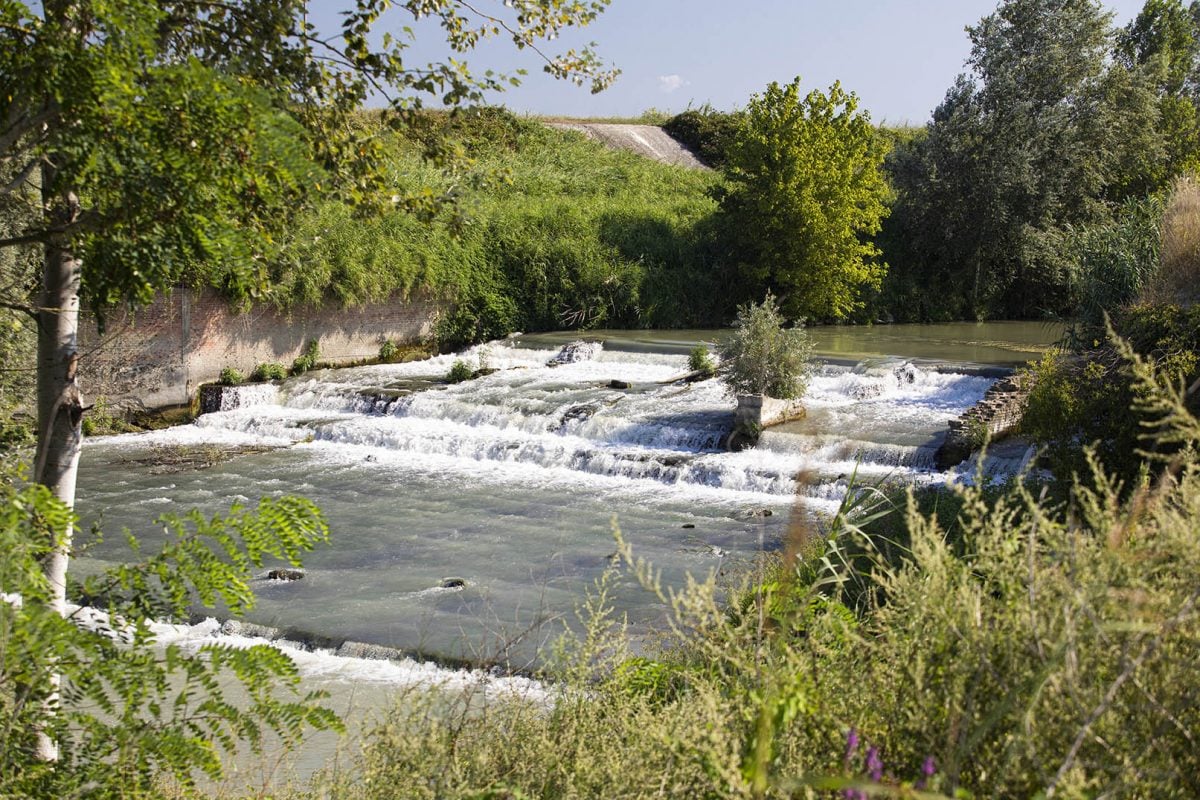
Along the Lamone River| Muraglione waterfalls (Bagnacavallo)
This waterfall represents the remains of the sluice that allowed to feed an ancient mill owned by the Rasponi family, and dating back to the 12th century.
In the Fifties was a meeting point for a refreshing bath, and still today is a rather frequented place for fishing or for pleasant walks.
2. San Giacomo Palace
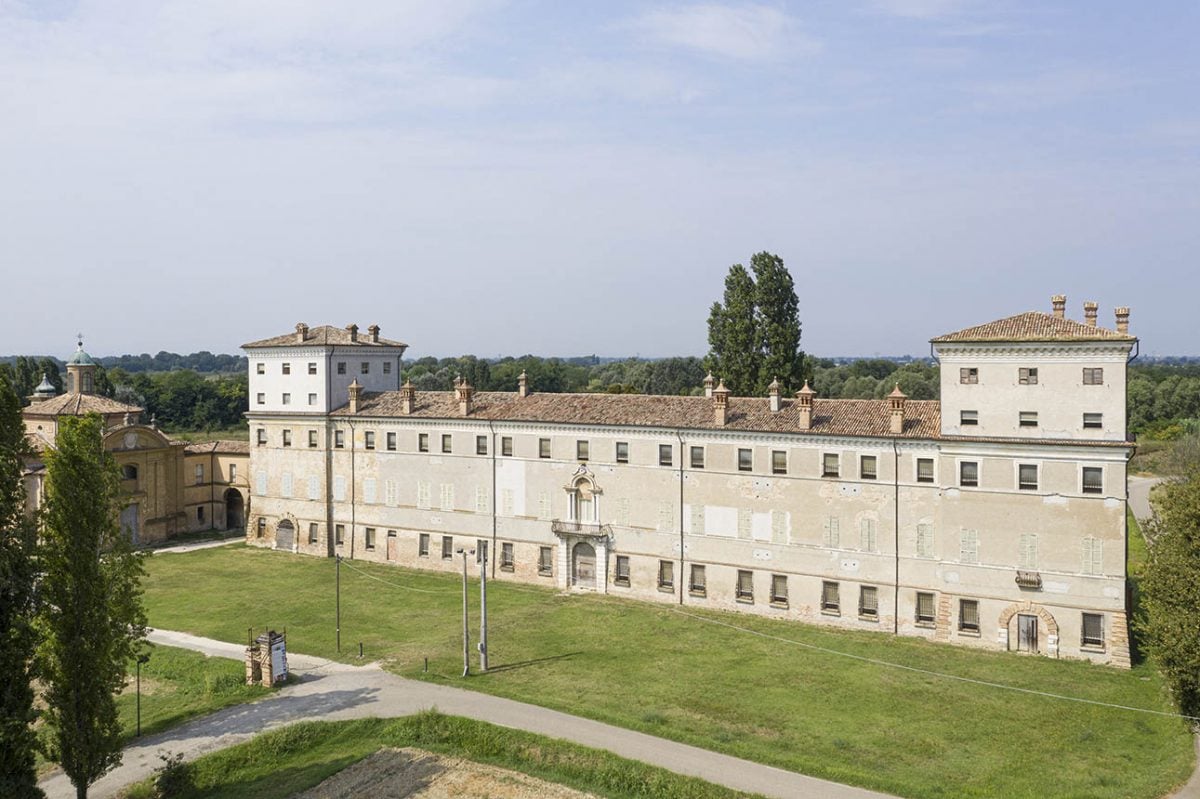
Along the Lamone River | San Giacomo Palace (Russi)
Built by the Counts Rasponi of Ravenna, probably in theend of the 17th century, San Giacomo Palace was one of the most beautifuland imposing summer aristocratic residences of all Romagna.
Remembered as the “palace of the 365 windows”, The decoration of the interior is perhaps the largest pictorial cycle ever arrived inRomagna between the 17th and the 19th century. The entire nobile floor is still frescoed.
3. Russi Roman Villa
About 1,2 miles from the Russi city centre, the archaeological site of the Roman Villa is one of the most importantand best preserved Roman findings of northern Italy. The excavations, started in 1938, have returned a very important residential and productive complex of more than 3.500 square meters, formed in the Augustan age and active until the 4th century.
4. Russi old castle
Due to a terrible earthquake that struck the Romagna in 1688, Russi preserves a historical center dated back to the 18th century. Today you can see a fortress, built in 1371 by Da Polenta family. In the following centuries the city was enlarged and the fortress was rebuilt by Astorgio II Manfredi. Inside the fortress there is the Castle Civic Museum.
5. Traversara tower
Elegant and austere building surrounded by greenery, Traversara tower was probably built guarding the Lamone river and the road leading to Traversara.
The tower, the only survivor of a complex of smaller buildings, constituted the residence of the Hercolani Counts of Bagnacavallo, and remained the property of the family, as a holiday residence, from the 15th to the 19th century.
6. The “Cagnazza”
The building, located near the left bank of the river Lamone, owes the unusual popular name to the presence on the top of the facade facing the river, of an earthenware statue, higher than natural, depicting a dog, there as a guard of the complex.
7. Ecological rebalancing area “Podere Pantaleone”
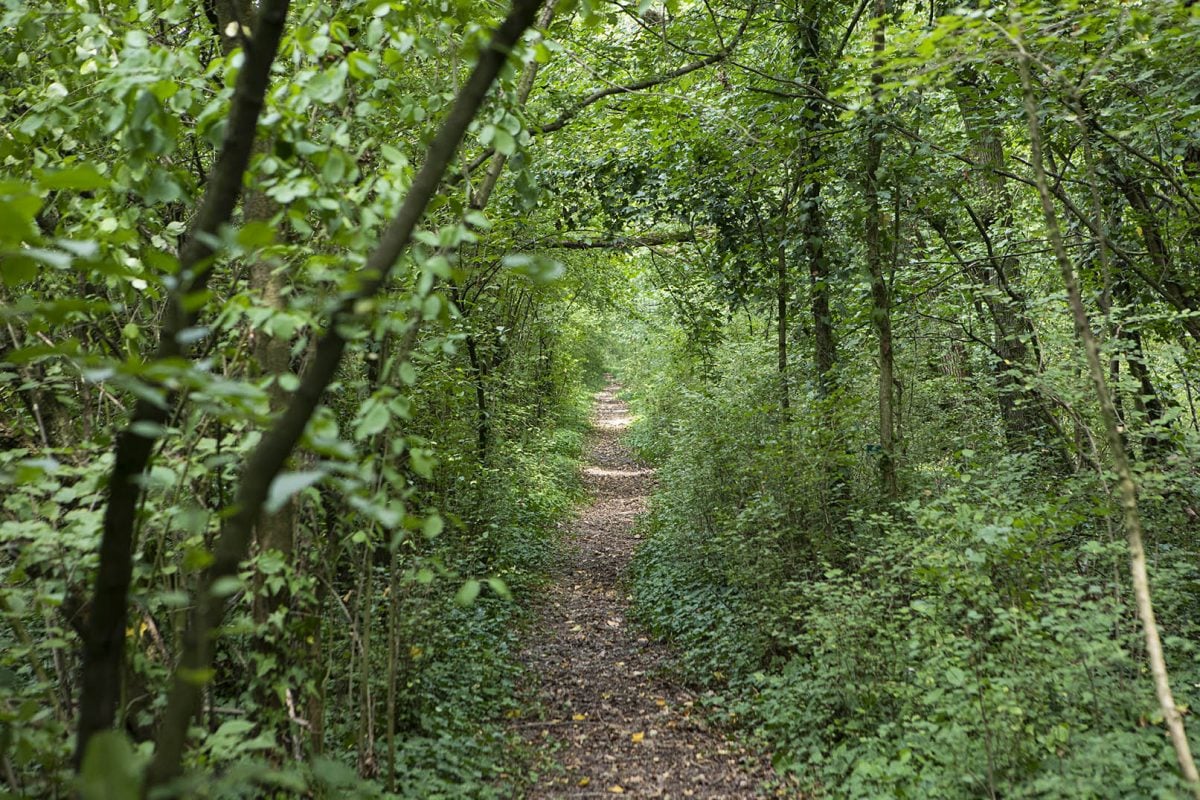
Along the Lamone River | Ecological rebalancing area “Podere Pantaleone” (Bagnacavallo)
A few miles from Bagnacavallo there’s “Podere Pantaleone” – Site of Community Interest belonging to Natura 2000 Network since 2006 – an oasis covering about nine hectares.
Over the years the rows of trees of the farm have been extended without hindrance creating a forest interrupted only by small grassy spaces: black and whitepoplar, country maple, farnia, elm, willow and cherry.
Among the attractions of the farm the great black poplar inserted forits size, age, cultural and ecological value in the first official list of the monumental Trees of Italy. More than a century old and 88 feet high, with a circumference of the trunk of more than 18 feet, is the second largest black poplar in the region.
8. Canadian War Cemetery
Located in Villanova of Bagnacavallo next to the municipal cemetery, the Villanova Canadian War Cemetery, built in 1944by the government of Canada, houses 212 tombs of Commonwealth soldiers.
9. Ecomuseum of Marshland Civilization
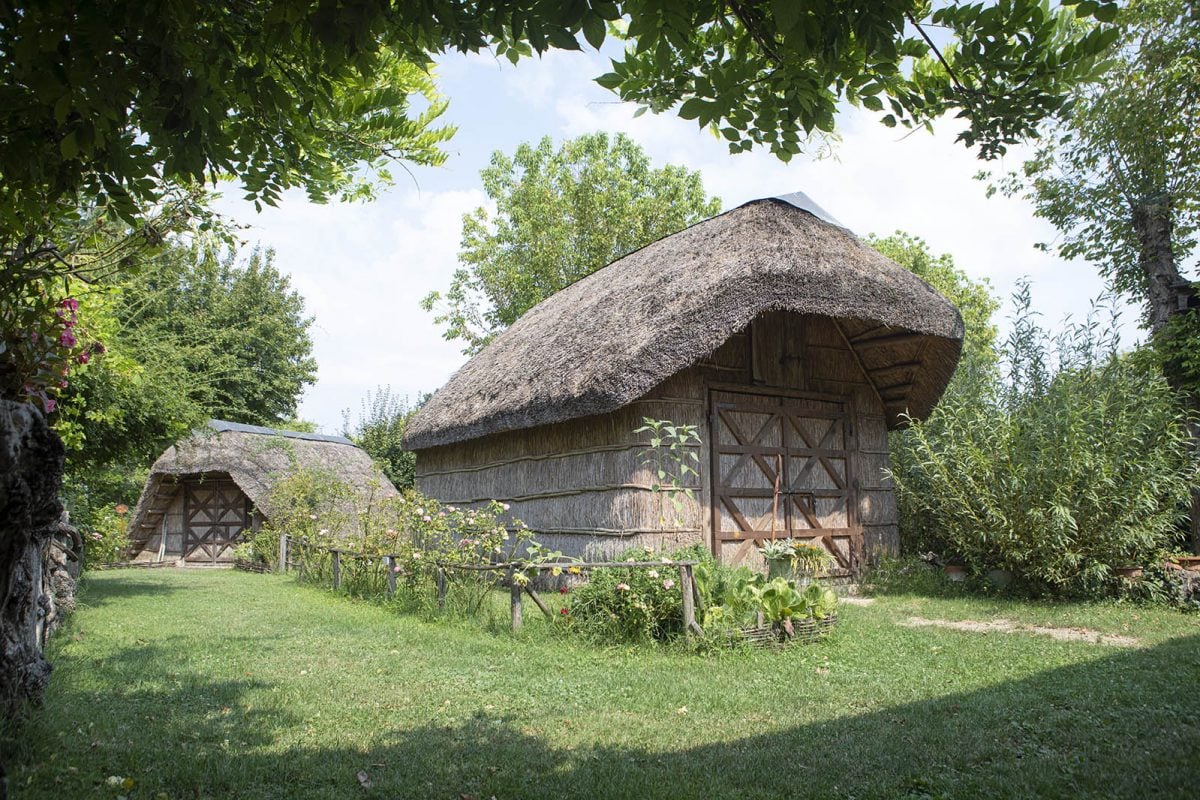
Along the Lamone River | Ecomuseum of Marshland Civilization (Villanova di Bagnacavallo)
In Villanova, once surrounded by a system of wetlands, this fascinating Eco-museum preserves the precious testimonies of the ancient civilization and the original use of marsh herbs. The “Villanova delle Capanne”, located along the left bank of the river Lamone, was once part of a complex territorial system of water courses and wetlands.
The Eco-museum of the marshland civilization preserves memory of that know-how and of that productive season and documents the environmental and economic context in which the country lived.
10. Villa Savoia
Villa Savoia was finished in the 17th century, by the Vaini Counts of Bagnacavallo, is now owned by the diocese of Faenza: a noble country residence inside which you can admire two large paintings of 18th century depicting the parable of the Prodigal Son.
11. Savarna towers
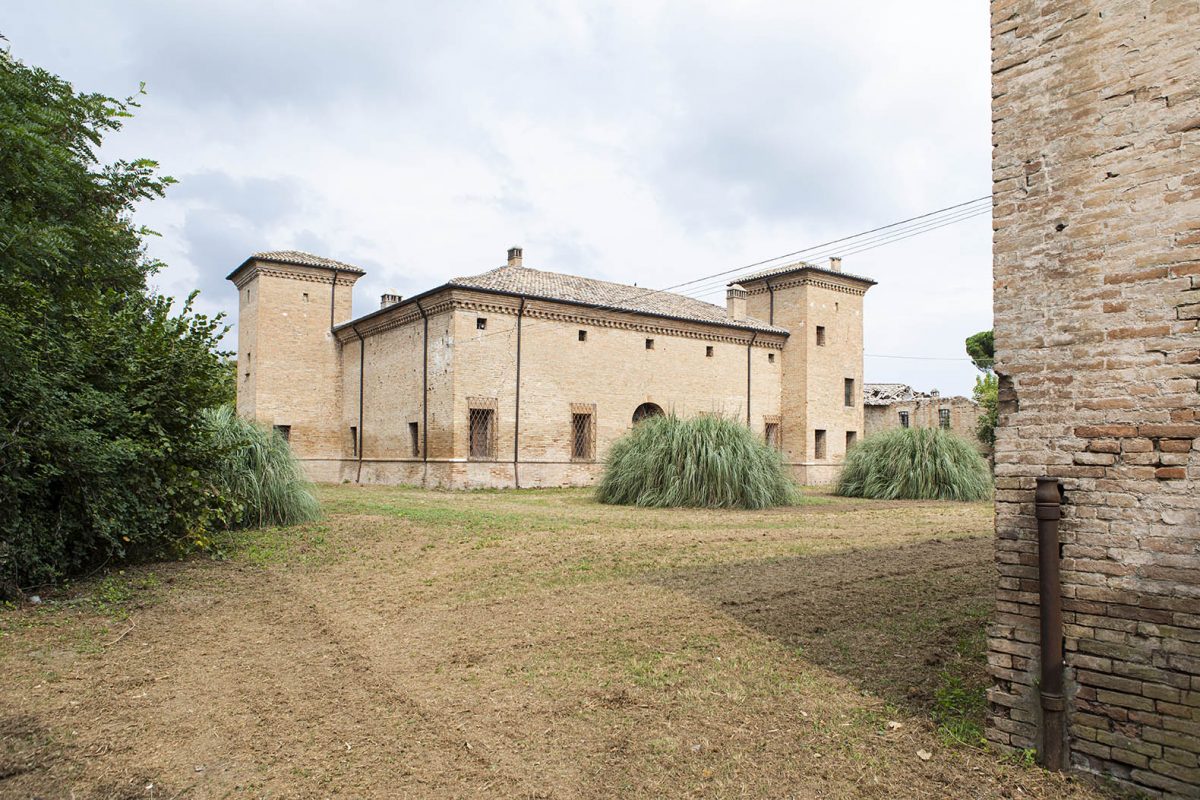
Along the Lamone River | Savarna towers (Ravenna)
Built in the 16th century by the Rasponi family as shelter for the hordes of bandits who acted in the Ravenna countryside, the Savarna Towers have resisted to the time arriving today in the form of a small fortress with two towers, halfway between the fortified castle and the mansion.
12. Ethnographic Collection of Rural Crafts
Charming museum of peasant civilization that contains over two thousand old tools and utensils of peasant use typical ofour countryside of Romagna. The private collection, realized by Romano Segurini, is housed in a nineteenth-centuryfarmhouse, consisting of house, stable, barn, services and two sheds made with marsh herbs.
13.. Mezzano former sugar factory
A large industrial complex built since 1907 completely dedicated to the processing of sugar (although in the 1930s a ceramics factory was established inside it), which remained active until 1988 when its last sugar campaign was carried out.
14. Former sugar factory’s basins
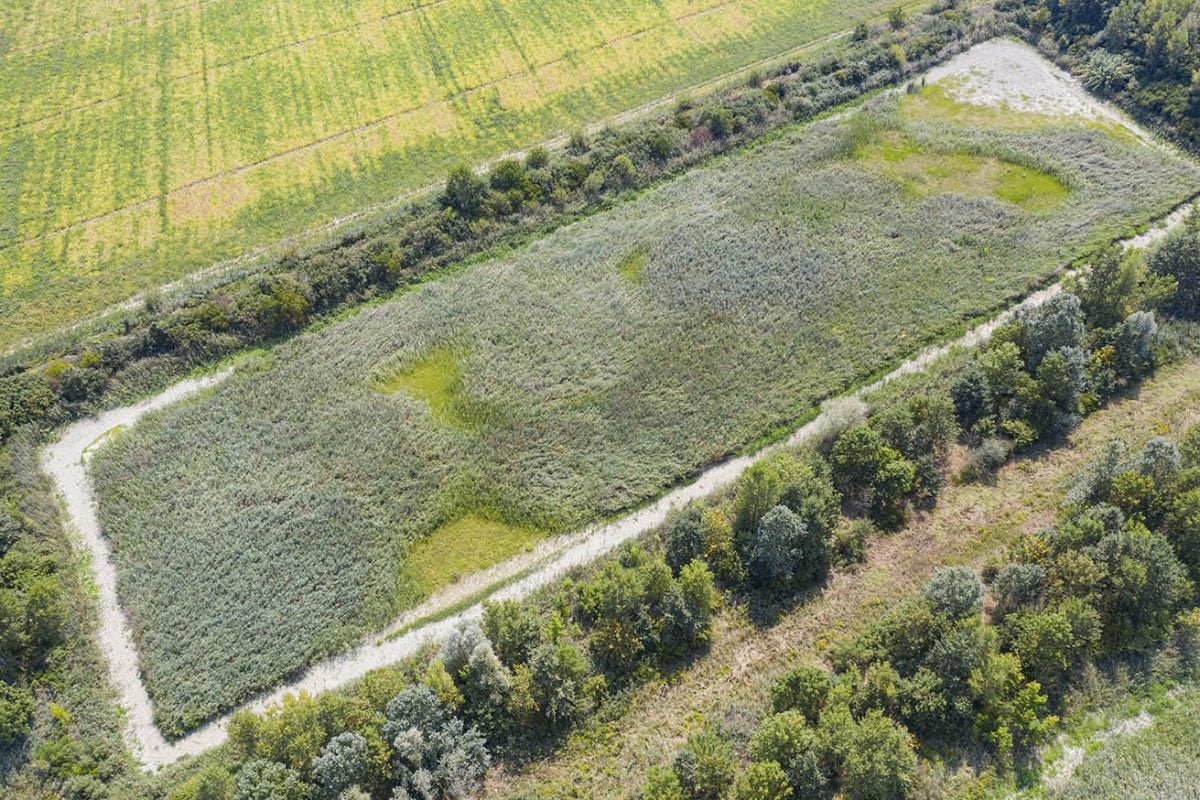
Along the Lamone River | Former sugar factory’s basins
The site consists of the tailing ponds of the beet scrubbing waters of the former sugar factory of Mezzano, located northof the Mezzano town.
The basins are an interesting wetland ecosystem included in the Rete Natura 2000 sites, with extensive reeds, mirrors of water and thick patches of willows.
15 Town of Sant’Alberto
This small town is surrounded by the beautiful landscapes of the Po Delta Regional Park, and represents the southernaccess to the great Comacchio Valleys, easily accessible by the picturesque ferry on the Reno river.
16 and 17. The “Palazzone” and Natural Science Museum “Alfredo Brandolini”
Imposing building of great historical value, as well as the Ferrara outpost in the land of Romagna wanted by the extensions in the first half of the sixteenth century as host of the Duke of Ferrara. It was a place of refreshment for pilgrims and travellers, a warehouse for food and, perhaps, a place of guard.
Today the building is now the seat of the Natural Science Museum “Alfredo brandolini” and of the Visitor Centre of the Po Delta Park.
18. Punte Alberete oasis
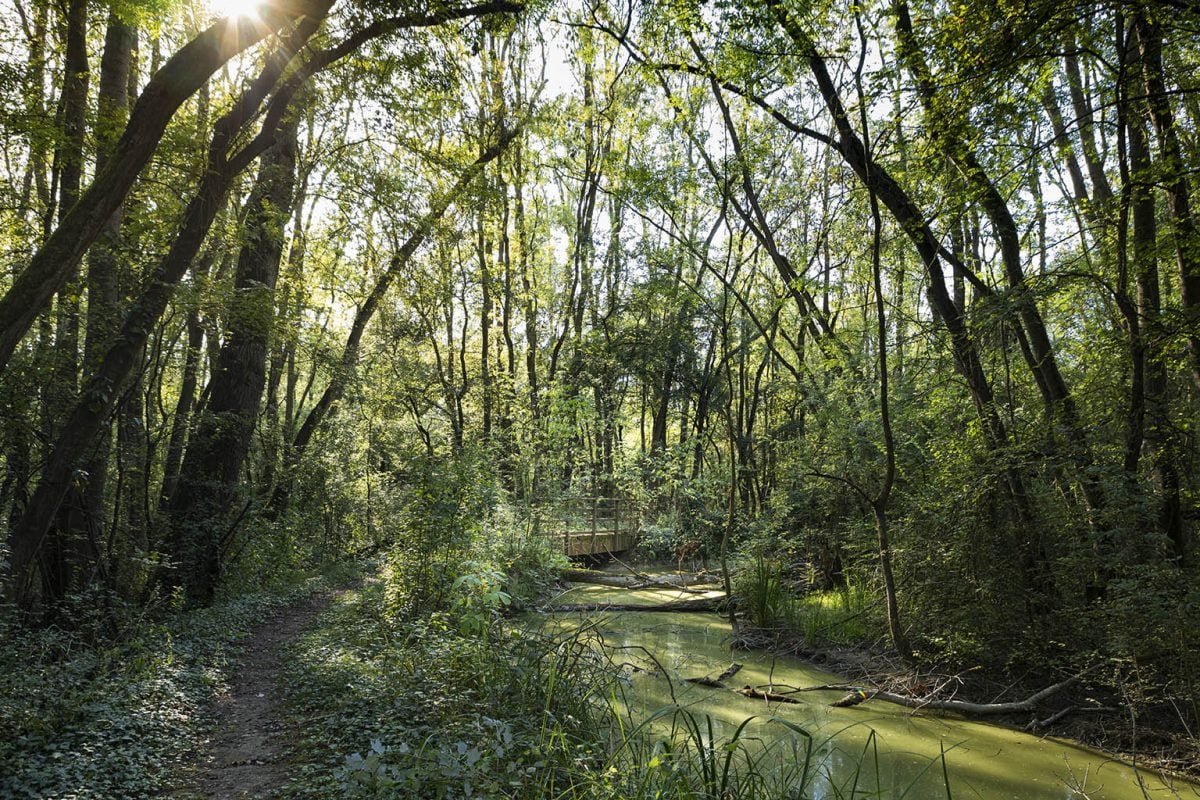
Along the Lamone River | Punte Alberete oasis (Ravenna)
Outstanding freshwater marsh environment, located south of the river Lamone, Punte Alberete oasis is composed of a fascinating mosaic of humid habitats, constitutes one of the most valuable ecosystems at national and community level.
It is a flooded forest very suggestive from the point of view of landscape, derived from the large crate of filled between the river Lamone and the channel Fossatone, and characterized by alternating environments of hygrophilous forest more or less inundated, submerged prairies, open clearings, flora and fauna typical of swampy environments of varying water depth. The protected natural area belongs to Natura 2000 Network.
19. Mandriole lagoon
The natural area located north of the river Lamone takes the name of Valle Mandriole (or Reeds Valley) and is a protected area belonging to Natura 2000 Network and to the Regional Park of the Po Delta.
This fresh water ecosystem, for years as integral protection, was part, together with Punte Alberete Oasis, of the ancient crate of overflow of the river Lamone. On the south side of the valley there is a watch tower that allows you to admire the magnificent landscape consisting of a vast expanse of fresh water mirrors alternating with ridges covered with thick reeds.
20. San Vitale pine forest
The pine forest dedicated to the most famous martyr of Ravenna is the largest (1130 hectares) of the three nuclei that remain of that vast and unique forest complex that stretched, at the end of 18th century, from Lamone river until the southern parto of Savio river.
It is a forest of pines, of ash trees, of white poplars, of oaks and oaks near the Adriatic Sea. The site, belonging to Natura 2000 Network, is almost totally included in the Po Delta Regional Park. The undergrowth is rich in hawthorns, plums, sanguinelle, olivastri,ginestrelle, pungitopi, asparagus, mushrooms, wild roses and more.
21. Baiona brackish lagoon
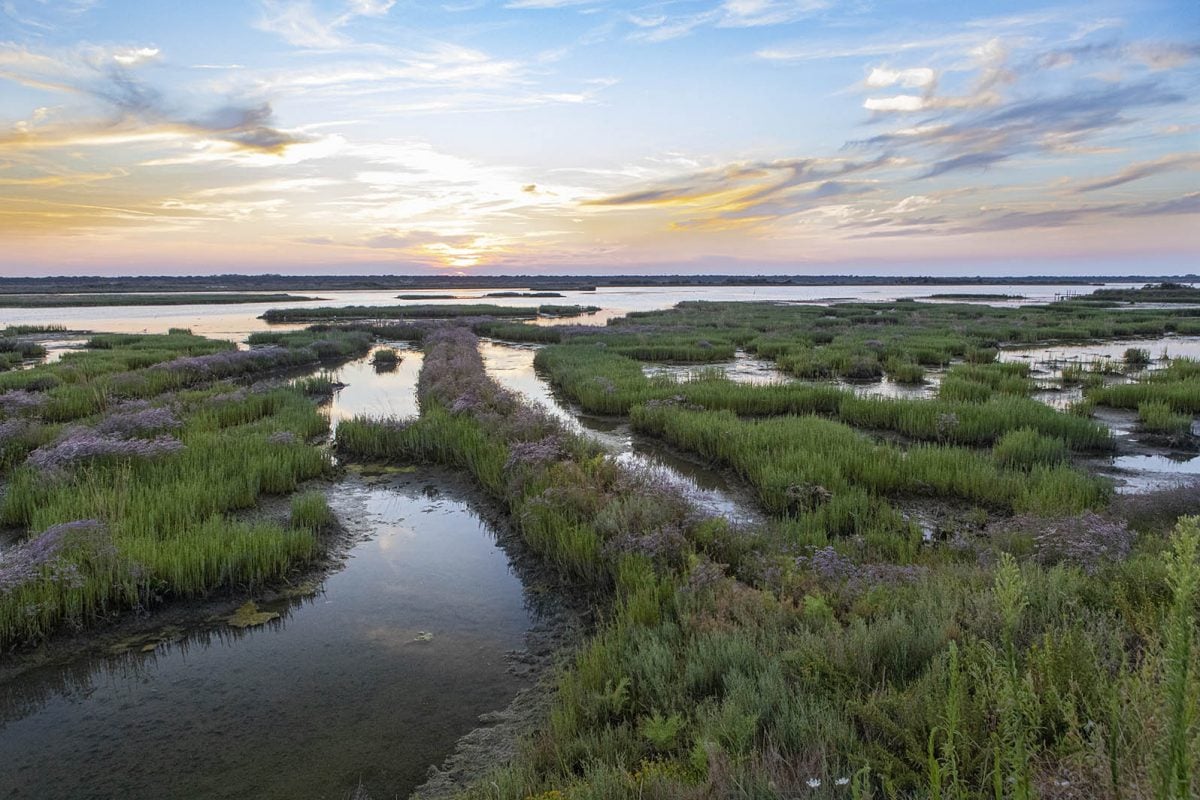
Along the Lamone River | Baiona brackish lagoon (Ravenna)
It is a lagoon ecosystem of great environmental and floro-faunistic value, recognized both nationally and internationally, which has an important socio-economic and territorial role, especially for tourism, recreational activities and fishing and shellfish harvesting.
Author

Davide Marino
Davide Marino was born archaeologist but ended up doing other things. Rational – but not methodic, slow – but passionate. A young enthusiast with grey hair
You may also like
Journey to Bassa Romagna, the Land of Good Life
by Davide Marino /// October 5, 2018
Discover Ravenna (Emilia-Romagna, Italy): Best Things to Do in the city
by Davide Marino /// November 16, 2017
The archaeological sites of Romagna
by Davide Marino /// February 9, 2018

Interested in our newsletter?
Every first of the month, an email (in Italian) with selected contents and upcoming events.
5 Experiences to do in the Po Delta Park of Emilia-Romagna
by Elisa Mazzini /// February 18, 2019
